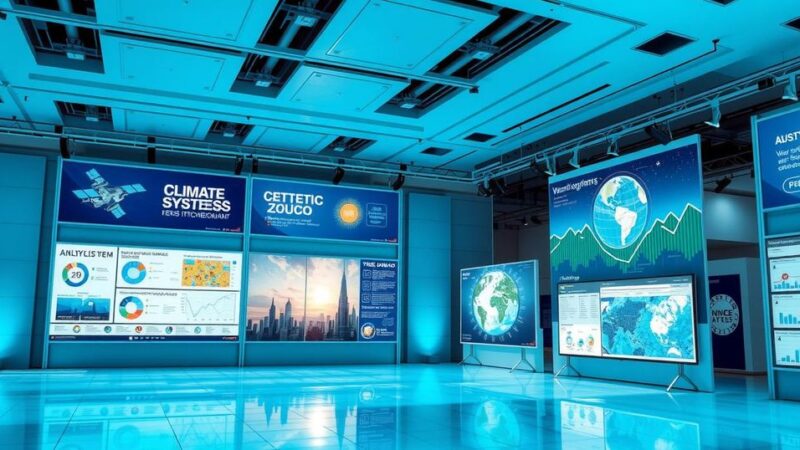This article discusses the implications of climate change on Guyana’s coastlines, highlighting potential land loss due to rising sea levels. It explores the risks to agriculture and infrastructure, raising questions about the viability of transportation projects amid environmental challenges.
The rising threat of climate change poses significant challenges to the coastal areas of Guyana, where predictions indicate that melting polar ice will lead to increased ocean levels. Currently, existing sea-walls may not suffice to shield the land, leading to concerns about how much of the Atlantic coastline may eventually be submerged. A prior essay published in the Stabroek News on July 31, 2009, underscored the urgency of this issue, emphasizing that the rising oceans pose a national security risk for Guyana.
As Guyana lies along the Equator, specific regions may become increasingly unfit for agriculture due to global warming. This phenomenon could also lead to spontaneous combustion in certain areas, adversely affecting the natural landscape, including forests and wildlife. Similar occurrences, such as devastating fires in Los Angeles attributed to climate change, highlight the potential consequences for Guyana’s ecosystems.
The implications of these environmental changes extend to infrastructure, including transportation routes and other projects that are either currently underway or in planning stages. The viability of maintaining trans-country and regional transportation systems, including roads, railways, and the port in Georgetown, comes into question as rising sea levels and environmental impacts may hinder such initiatives.
The geopolitics of land use in response to climate change and fluctuating populations is critical for nations like Guyana. This South American nation faces the threat of rising sea levels due to melting ice in the polar regions, leading to a potential loss of coastal land. The interaction between environmental changes and land viability for agricultural and infrastructural purposes is essential for preserving national security and economic stability, particularly for countries vulnerable to these conditions.
In summary, Guyana faces a precarious future as climate change threatens its coastal infrastructure and agricultural capabilities. With rising ocean levels potentially submerging parts of the coastline, the need for adaptive measures becomes paramount. Furthermore, the impact on transportation and infrastructure systems raises significant concerns about the sustainability and safety of these essential services moving forward.
Original Source: www.stabroeknews.com






